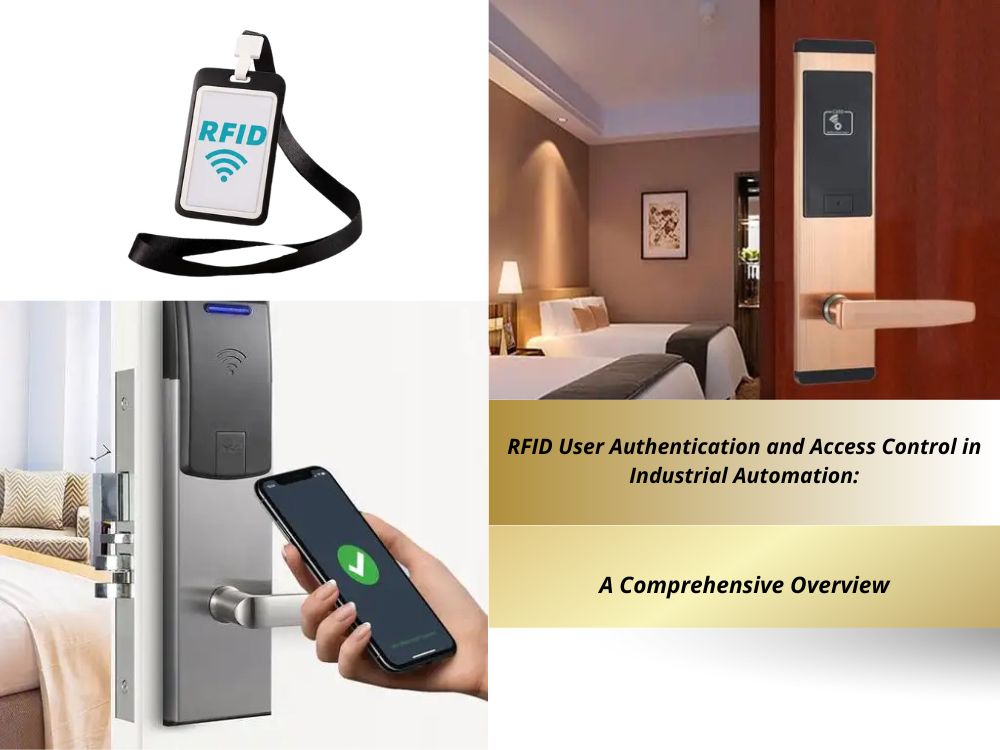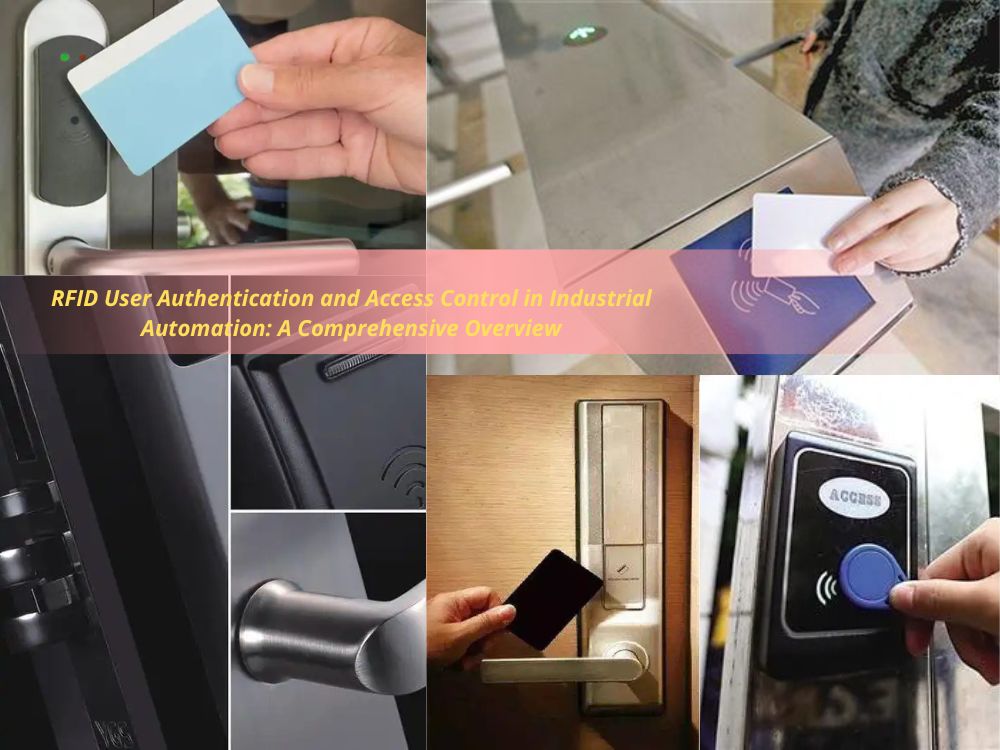
RFID User Authentication and Access Control in Industrial Automation
Table of Contents
Summary
RFID (Radio Frequency Identification) card systems have emerged as a highly effective solution for user authentication and access control, surpassing traditional methods such as magnetic stripe cards, smart cards, and PIN pads. This article explores the key advantages of RFID systems, their operational mechanisms, and considerations for selecting the appropriate RFID solution in industrial settings.

Summary of RFID Authentication Benefits
RFID technology provides a touchless, convenient, and secure method for user authentication and access control in industrial automation. RFID cards offer a superior solution due to their ease of use, flexibility, durability, and robust performance in challenging environmental conditions. This technology supports various applications, from basic building entry to complex access control within hazardous manufacturing areas.
Key Benefits of RFID Systems
Convenience and Usability
RFID card systems are distinguished by their touchless operation, requiring users to merely wave their RFID card within a short range of a reader. This interaction is intuitive and quick, minimizing delays and enhancing user experience.
Feature | RFID System | Traditional Methods |
Operation | Touchless, proximity-based | Contact-based, manual |
User Interaction | Quick and seamless | Time-consuming |
Maintenance | Low maintenance | High maintenance |
Flexibility and Versatility
RFID readers can integrate with existing building-entry ID cards, adding functionality for time-based access control and entry into specialized areas such as manufacturing floors or hazardous zones. The ability to read and write to various card types makes RFID systems adaptable to different organizational needs.
Durability and Reliability
Industrial environments often expose access control systems to harsh conditions, including dust, moisture, and extreme temperatures. RFID systems are designed to withstand these conditions, offering reliable performance and extended lifespan compared to other methods.
How RFID Authentication Works in Industrial Automation
RFID authentication in industrial automation involves a few key components:
- RFID Cards: These cards contain embedded RFID chips that store unique identification data.
- RFID Readers: Devices that scan RFID cards to read or write data, verifying user identity and access rights.
- Access Control Systems: Software that manages and configures the access permissions, time-based access, and integration with other security measures.
RFID System Components
Component | Description |
RFID Card | Stores user credentials and access permissions. |
RFID Reader | Scans the card and communicates with the control system. |
Access Control Software | Manages permissions and logs access events. |
Application Considerations for RFID Systems
When selecting an RFID system for industrial automation, consider the following factors:
- Environmental Conditions: Ensure the RFID system’s durability matches the operational environment.
- Compatibility: Verify that the RFID reader is compatible with existing cards and systems.
- Scalability: Choose a solution that can scale with organizational growth and changing requirements.
- Security: Assess the encryption and data protection measures provided by the RFID system.

Conclusion
RFID card systems offer a modern, efficient solution for user authentication and access control in industrial automation. Their touchless operation, flexibility, and robustness make them an ideal choice for managing access to sensitive and critical areas within manufacturing environments. By understanding the benefits and operational mechanisms of RFID technology, organizations can enhance their security measures and streamline access control processes.
Comments
Hot Products

What Is RFID Waste Management
Imagine a city where every trash bin speaks — not literally — but through a tiny chip that tells the system when it’s full, when it’s emptied, and where it went. That’s what RFID waste management is doing today.

What are Bolt Seals and their Applications? | Complete Guide
In global trade and logistics, bolt seals play a crucial role in ensuring cargo security and compliance. These small but powerful devices are designed to lock shipping containers, trailers, and cargo doors with a tamper-evident mechanism.

What is an RFID Card Protector? Benefits, Use Cases, and Buying Guide
RFID technology (Radio Frequency Identification) is everywhere: in your credit cards, ID badges, transit passes, hotel room keys, and more. It offers speed and convenience, but it also opens the door to a new kind of digital theft called “skimming.” That’s where an RFID card protector comes in.

RFID Wristbands for Events: Bulk Buying Guide for Organizers
RFID wristbands for events are becoming the go-to solution for organizers who need faster entry, fraud prevention, and cashless payments at concerts, festivals, and sports venues. Unlike paper tickets or QR codes, these smart wristbands use embedded chips to streamline access, secure transactions, and improve the guest experience.

How RFID Tag on Windscreen Improves Vehicle Access Control and Toll Systems
In today’s fast-paced world, vehicle identification needs to be quick, secure, and contactless. An RFID Tag on the Windscreen provides exactly that — a reliable way to manage toll collection, parking, and gated access without stopping vehicles.

The Benefits of RFID Linen Tags in Commercial Laundry
Managing laundry in hospitals, hotels, or large laundry services is a big job. Each day, thousands of sheets, towels, and uniforms are washed, sorted, and sent back out. But problems like lost linens, sorting mistakes, and manual counting can cost companies a lot of money. For example, mid-sized hotels can lose over $200,000 each year from missing linens.
That’s where RFID Linen Tags come in.
Tags
RELATED BLOGS

What Is RFID Waste Management
Imagine a city where every trash bin speaks — not literally — but through a tiny chip that tells the system when it’s full, when it’s emptied, and where it went. That’s what RFID waste management is doing today.

What are Bolt Seals and their Applications? | Complete Guide
In global trade and logistics, bolt seals play a crucial role in ensuring cargo security and compliance. These small but powerful devices are designed to lock shipping containers, trailers, and cargo doors with a tamper-evident mechanism.

What is an RFID Card Protector? Benefits, Use Cases, and Buying Guide
RFID technology (Radio Frequency Identification) is everywhere: in your credit cards, ID badges, transit passes, hotel room keys, and more. It offers speed and convenience, but it also opens the door to a new kind of digital theft called “skimming.” That’s where an RFID card protector comes in.




